
This year’s Mobil 1 12 Hours of Sebring climaxed in chaos when the top three GTP cars crashed out of the race during the final hour.
Among the teams fighting through the tense endurance race was the Lexus Racing and Vasser Sullivan team, which performed well with their RC F GT3 entries—their GTD PRO car earned a second-place finish at Sebring to improve on a third-place finish earlier this year at the Rolex 24 at Daytona.
I saw the action up-close and spoke with the drivers and pit crew about what it’s like to put their cars—and their bodies—through hours of intense pressure to pull off a podium finish.
Adrenaline Cowboys
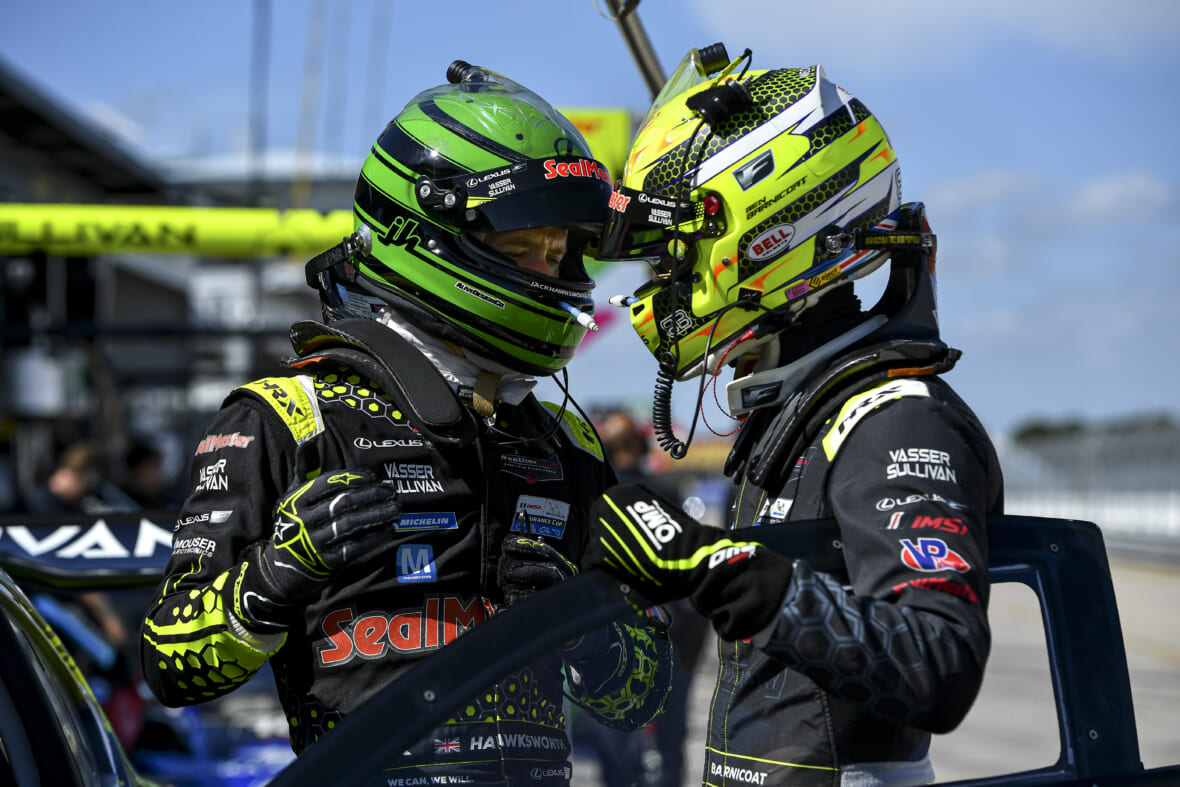
“It’s the best job in the world,” says Ben Barnicoat, a 26-year-old professional driver from Sheffield, England, who helped earn the second place at Sebring alongside fellow drivers Jack Hawksworth and Kyle Kirkwood. Racing is Barnicoat’s full-time job, and he racked up 28 races last year. He competes in the GTD PRO class for the Lexus and Vasser Sullivan team, though he’s quick to say that the non-pro drivers in the team’s GTD car are just as good.
Frankie Montecalvo is a 32-year-old driver in the GTD category for the same team, and his fellow Sebring drivers were Parker Thompson and Aaron Telitz. Montecalvo competed in 13 races last year in addition to his full-time day job, where he runs an industrial recycling company with his family in New Jersey. He references a certain driver from the past with a career on the side to explain his work-drive balance: “If you look at history, Paul Newman was one of those guys.”
Barnicoat and Montecalvo are more thoroughbreds than jockeys: Whether you like motorsports or not, these guys are quite the physical specimens. Not to mention, the poise required to coolly push the limits of their bodies, minds, and cars makes you feel like a nervous wreck by comparison.
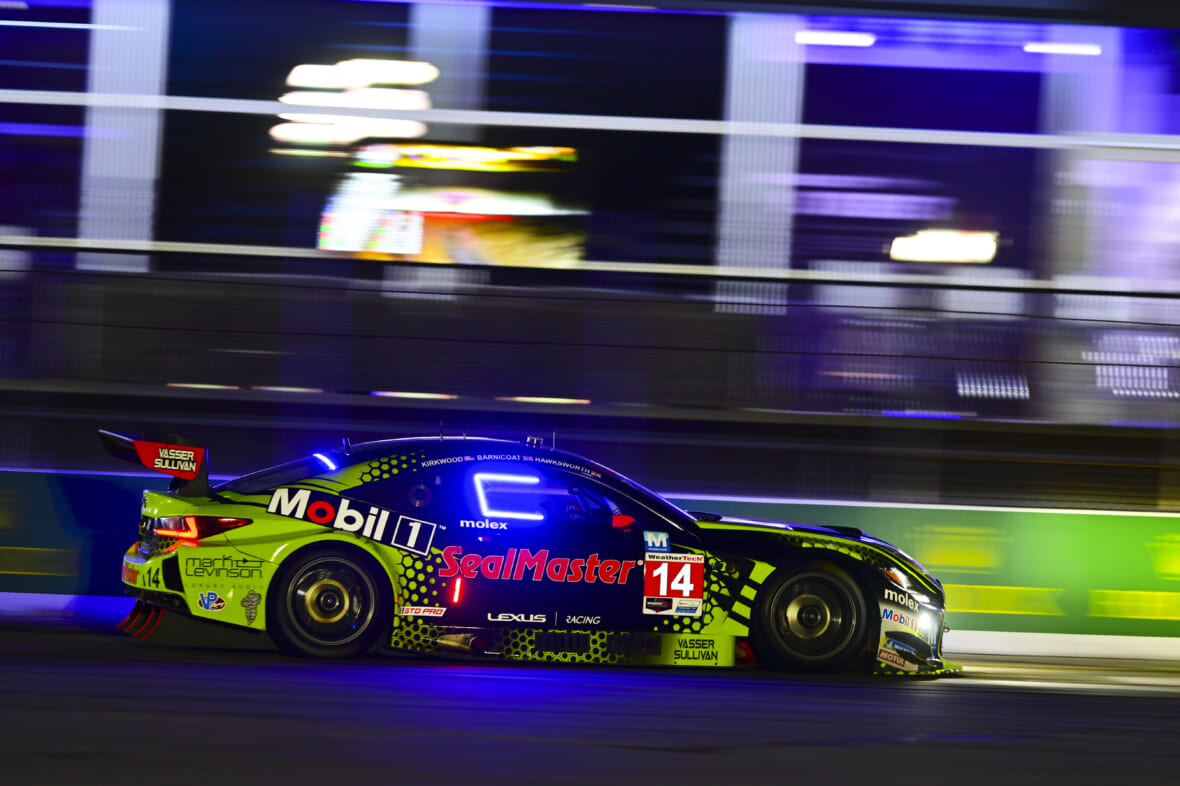
They don’t drink alcohol. They eat well and drink only water, with help here and there from energy gels and electrolyte powders. Barnicoat points out that an energy drink may give you a quick second-wind, but the caffeine and sugar will eventually catch up to you in a 12 or 24-hour race. “It’s pretty simple,” says Barnicoat of their dietary routine. “No bullshit.”
Barnicoat’s favorite race of the year in the U.S. is Petit Le Mans in Atlanta, coming up in October. Because it’s the last race of the season, the teams improve all year and then give it everything they’ve got. The actual Le Mans race in France is both Barnicoat’s and Montecalvo’s favorite race in the world.
But they say the vibes of a European track are way different that they are in the U.S. Stateside, drivers of different teams are friendly with each other, and walk around and look at the other team cars in the pits. Across the pond, there is no inter-team fraternizing. “In Europe, you can’t get near another team’s car and none of the drivers from different teams talk to each other,” says Barnicoat.
Pitting Out
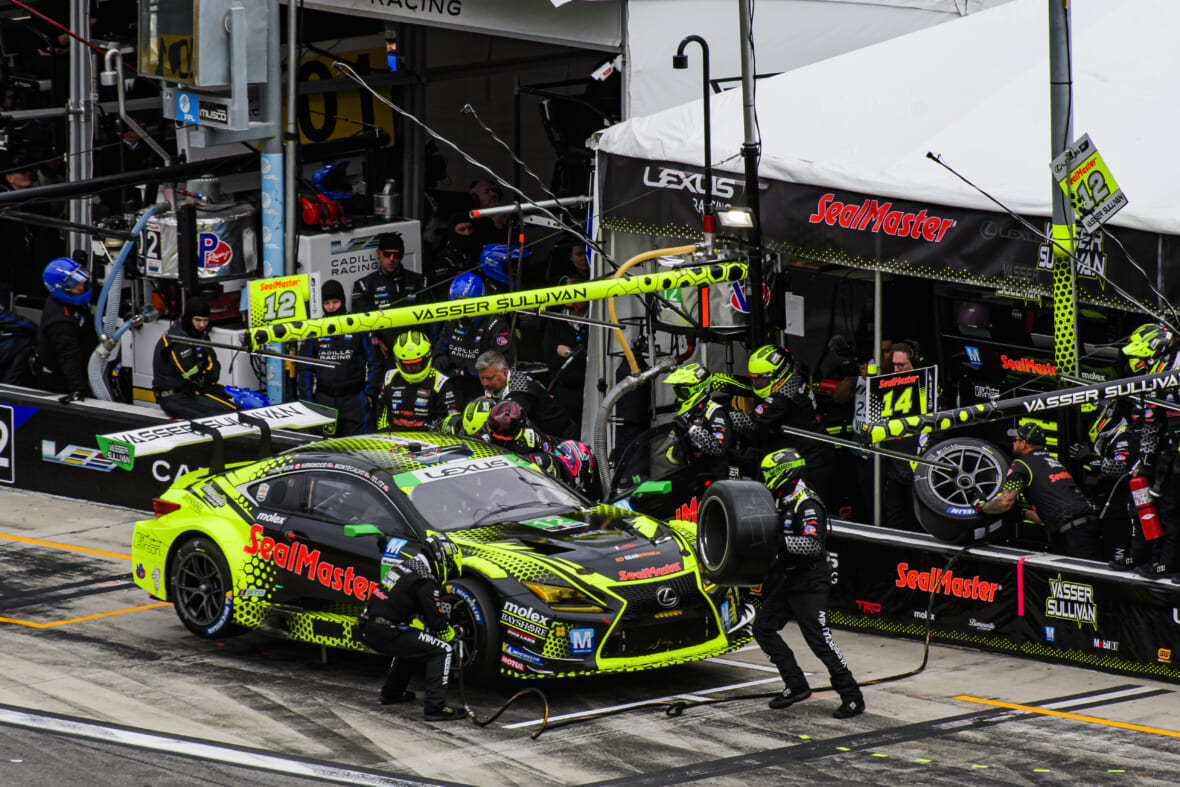
Bozi Tatarevic is a Serbian-born pit crew member for Lexus Racing and Vasser Sullivan. He got into the industry as an automotive journalist and decided he wanted to switch places with his subjects and join a pit crew and work on race cars. I spoke to Tatarevic before the Rolex 24 at Daytona, and he walked me around one of the team’s RC F GT3 cars, which he says have more in common with the production RC F than you’d think.
But it’s hard to see the resemblance when you’re looking at the stripped-down skeletal interiors of the cars they compete with. The chief luxuries are a CamelBak-style straw for the drivers and a vent that blows air into the driver’s helmets.
Tatarevic points out one item that is identical to the production car: the start button. The steering wheel looks like a video game controller, with brightly colored buttons marked with things like WIPER, ALARM, PIT LIMIT, RADIO, PASSING.
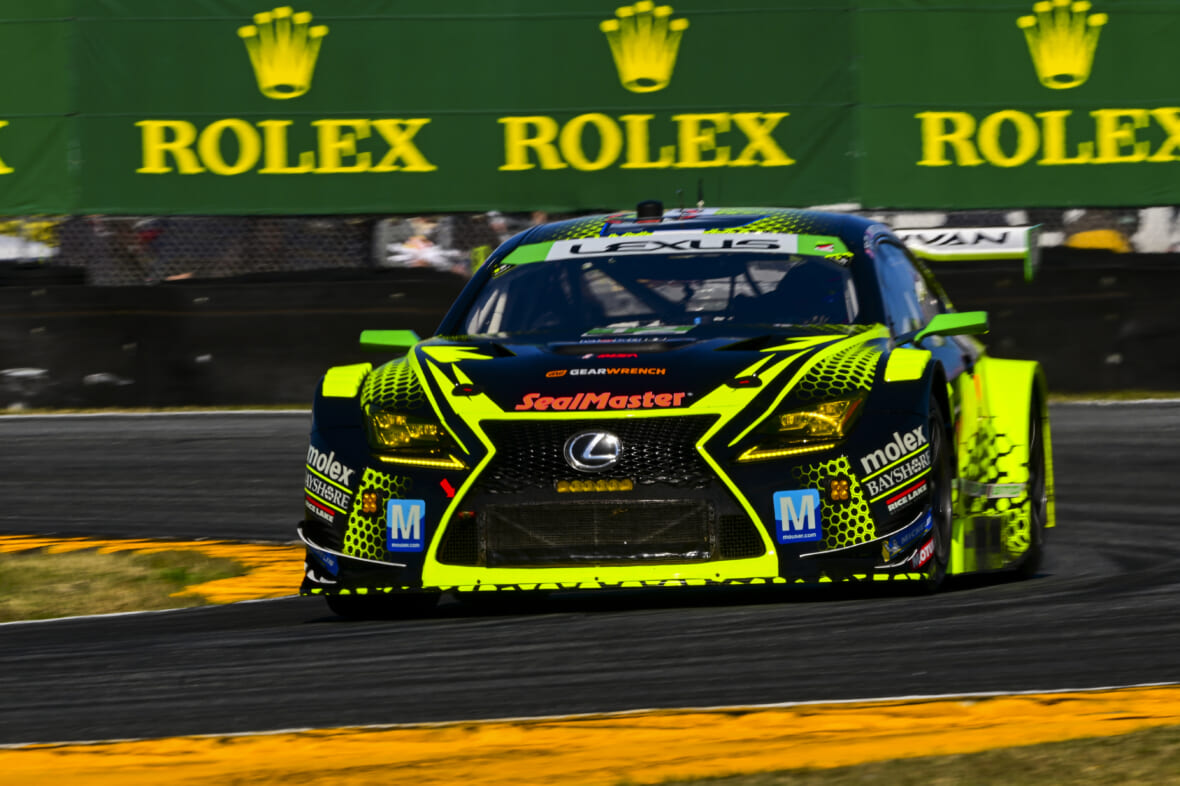
Outside there’s a massive spoiler that can be adjusted for traction as the track conditions change. On the windshield are layers of plastic stickers that act like disposable screen protectors on your phone and have neon yellow pull tabs so they can be easily ripped away as they get covered in burnt rubber, bugs, and any other track schmutz.
Tatarevic says they go through about one set of tires every racing hour, but there are limits on how many they can use over the course of a race. For Rolex 24, that number was 31 sets for the race and all practice runs. The wheels only have one nut for instantly swapping tires during pit stops.
There is a governor on the engines that limits output to 500-550 horsepower, because the goal for the league (IMSA) is for all the cars to be roughly equal in performance. That said, these cars still average 110 mph during race laps.
Hell For Leather
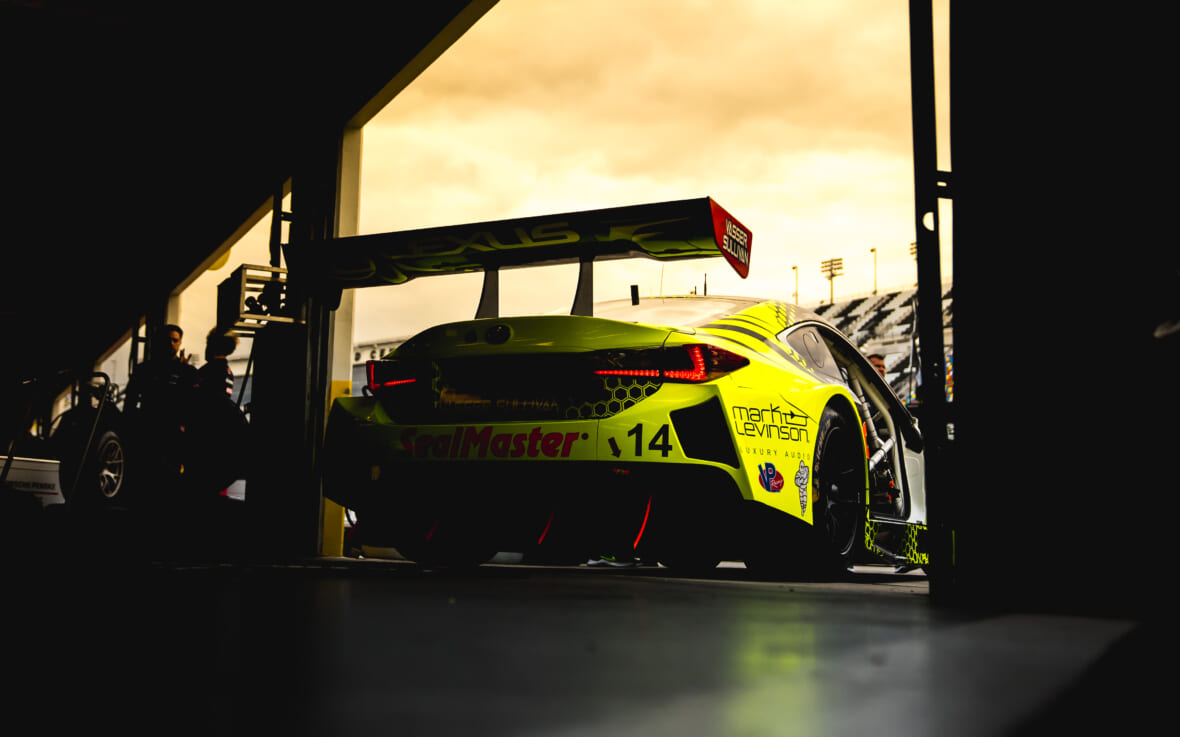
The pits ricochet with adrenaline during the race. They’re constructed in two tiers, with teams of engineers sitting on the upper decks following every aspect of the cars’ vital signs in real time on monitors. Below them sit drivers, pit crew members and Lexus execs. Behind them are photographers and journalists like me just trying not to trip over (or back into) any critical equipment.
The camaraderie within the team is felt everywhere during the race weekend: in the garage, trailers, and most of all, in the pit. Even the Lexus executives from the C-suite are fist bumping drivers coming on and off the track. It’s a close-knit family that comes together for an intense but brief period, then many go back to desk jobs and even schoolwork. During the Rolex 24, one of the pit crew sat down with a textbook to study for a college mid-term exam through the visor of his helmet.
During the race, the drivers are constantly talking to their engineers over the radio about how the cars are performing, so adjustments can be made during the next pit stop. Toyota Racing Development (aka TRD) and Lexus Racing use all the R&D they get from their combined motorsports programs to advance and evolve their consumer production cars, so everything they learn on the track is valuable intel beyond just winning races.
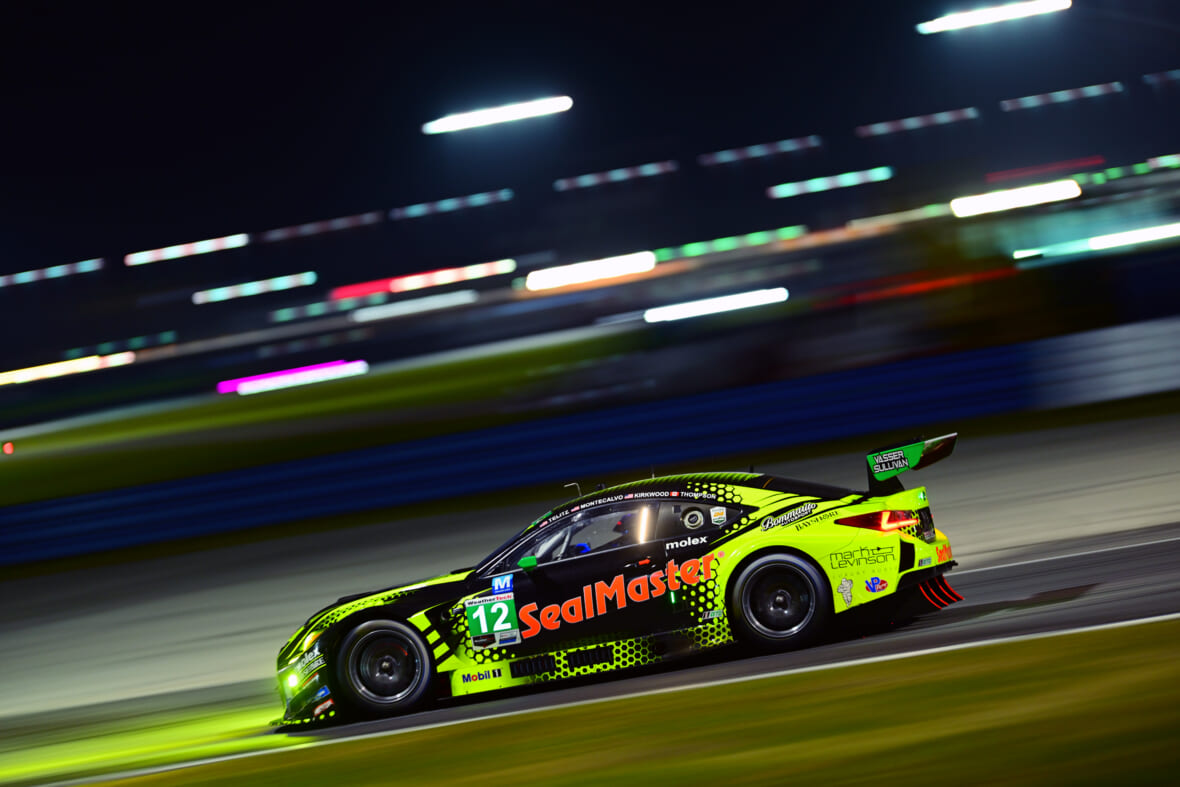
I took a hot lap around the track at Daytona with a pro driver, and then got behind the wheel for three (lukewarm) laps around the track. The difference between a television view of a track and a cockpit view is stark––you just feel tiny next to the steep banking walls and 30-foot-high fences, like you’re riding roller skates on a runway.
I’ve seen races before, but never so close that the noise rattles your skull, and you can taste the gas and burnt rubber in the air. I climbed the flag stand in the final hours of the Rolex 24 and looked down at the cars as they flew by below me.
I watched the first turn at Daytona from the infield, standing spitting distance from the loud metal and carbon fiber beasts as the they came around the track and merged with others leaving the pits, bumpers kissing bumpers at speeds most of us wouldn’t even dare approach on an empty freeway.
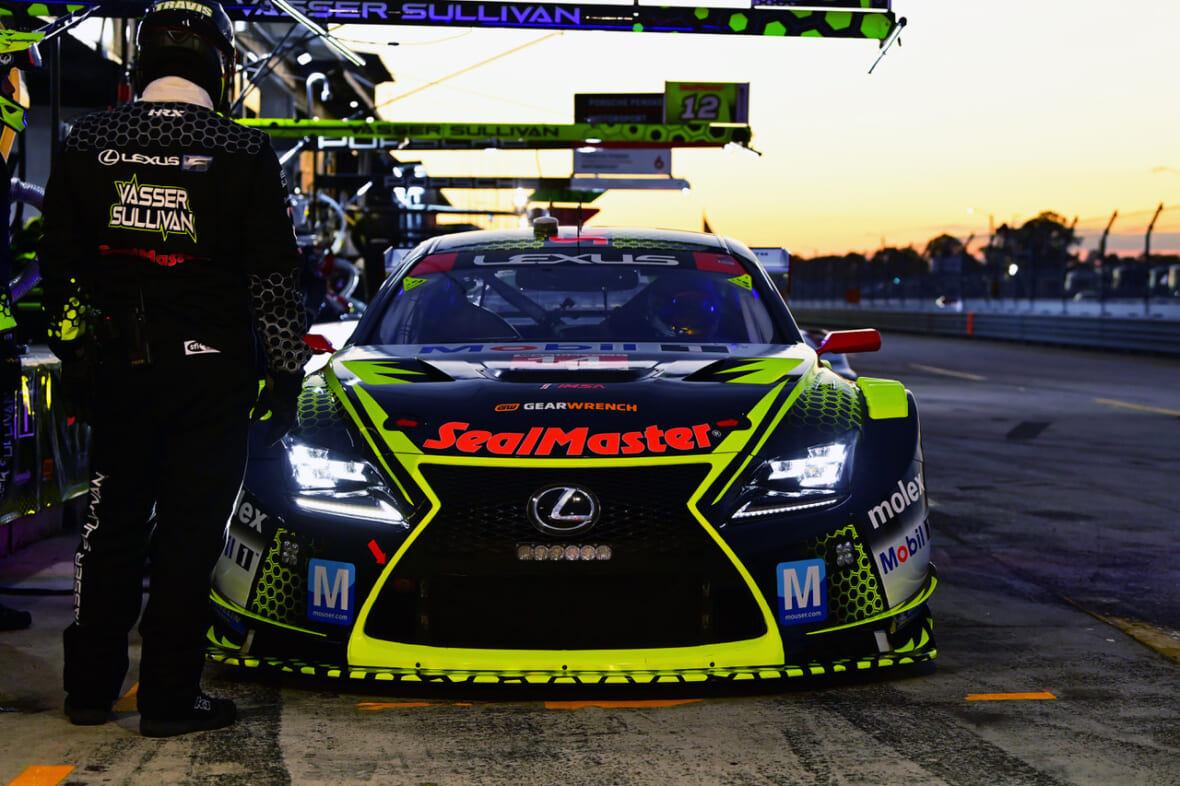
Even when they’re on their breaks from the race, the drivers hardly ever get any rest. “It’s hard to switch off between stints,” says Barnicoat. They eat, shower, maybe steal a brief doze, then it’s back to the pit and “that’s when you realize how powerful adrenaline is,” says Barnicoat.
“When you’re on the pit wall, waiting for the car to come in and for someone else to jump out, your adrenaline takes over and you feel full of life and energy.”
The biggest thing on the drivers’ minds when they’re on the track is protecting their cars. “Just trying to stay out of trouble and take no damage whatsoever,” says Montecalvo, whose RC F took damage from another car at Sebring. He fought back to a top-five finish.
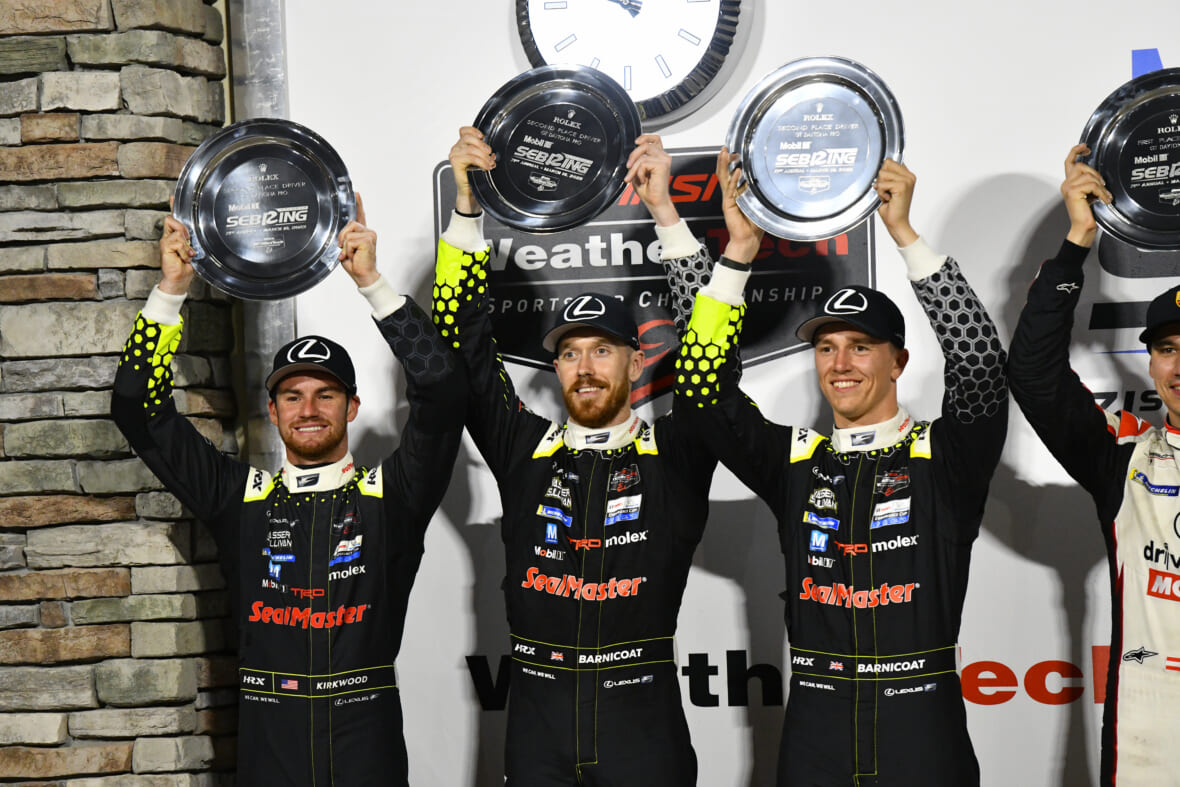
Keeping the cars safe is made even harder by the fact that they’re sharing the track with prototype cars racing at least 10-15 mph faster at the same time, flashing their lights for the GT cars to move out of the way as they pass them. At Sebring, the GTD PRO cars top out around 110 mph during the race, while the GTP cars are going around 125 mph.
Montecalvo says that improvements to the cars have really changed racing over the past several years because they can handle more abuse, which makes the races harder on the drivers from start to finish.
“When I started racing, you had to really take care of the cars for most of the race and then you’d have one big push at the end,” says Montecalvo, “But now it’s a sprint from start to finish.” Barnicoat seconds this, saying “everyone is full push the whole time––it’s really demanding.”
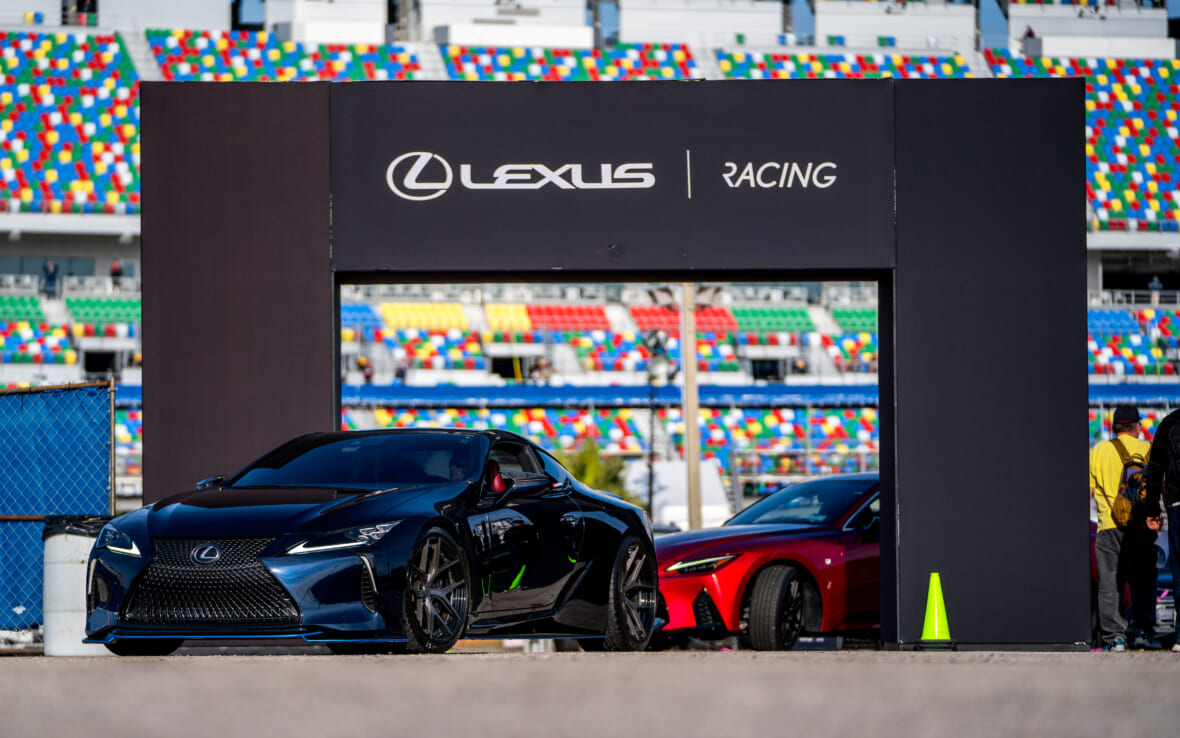
With all the physical and mental strain, I asked Montecalvo about racing at 32, and he joked that he’s over-the-hill in driver years. When I asked the 26-year-old Barnicoat how long he wants to keep racing, he pointed out that his fellow driver Mike Conway is 39 and in the prime of his career, and said simply, “For as long as I can.”





